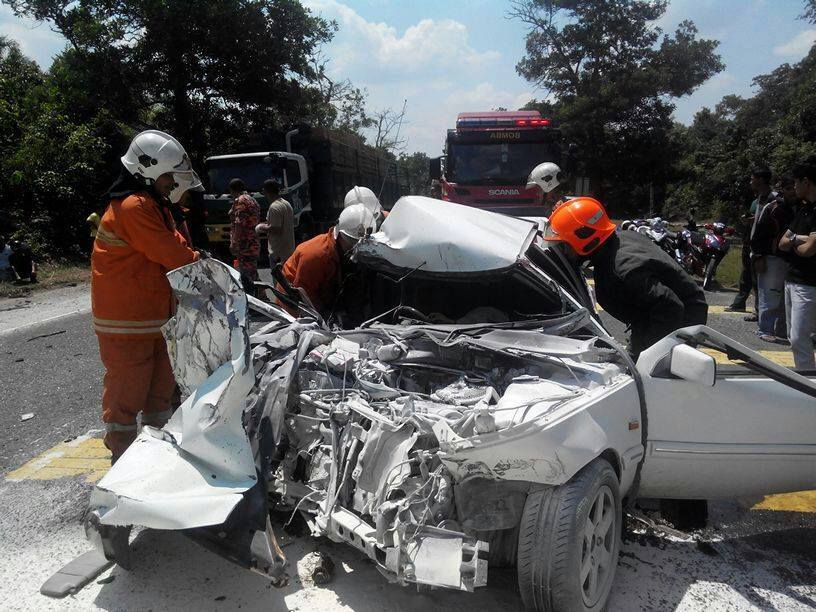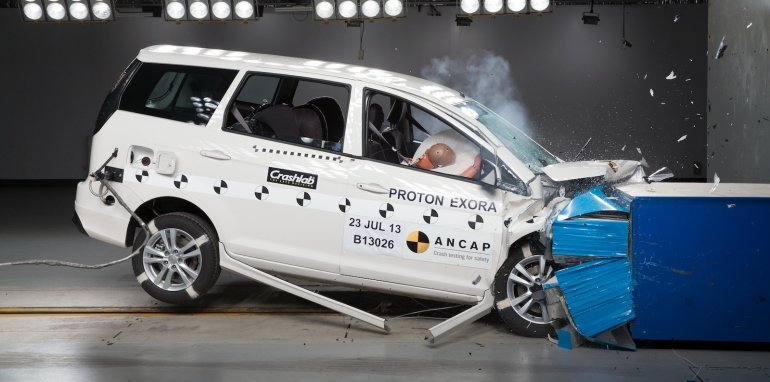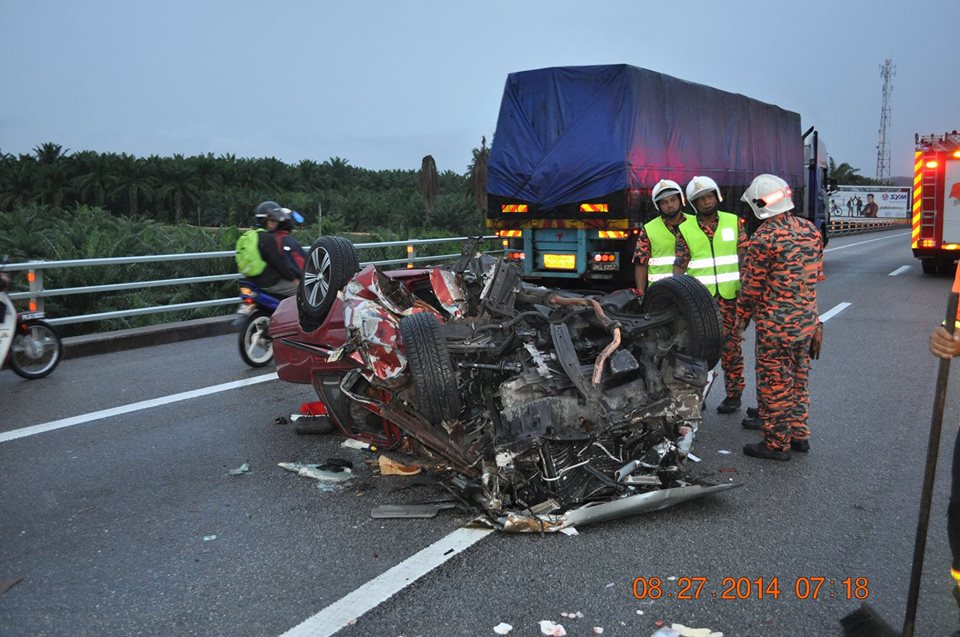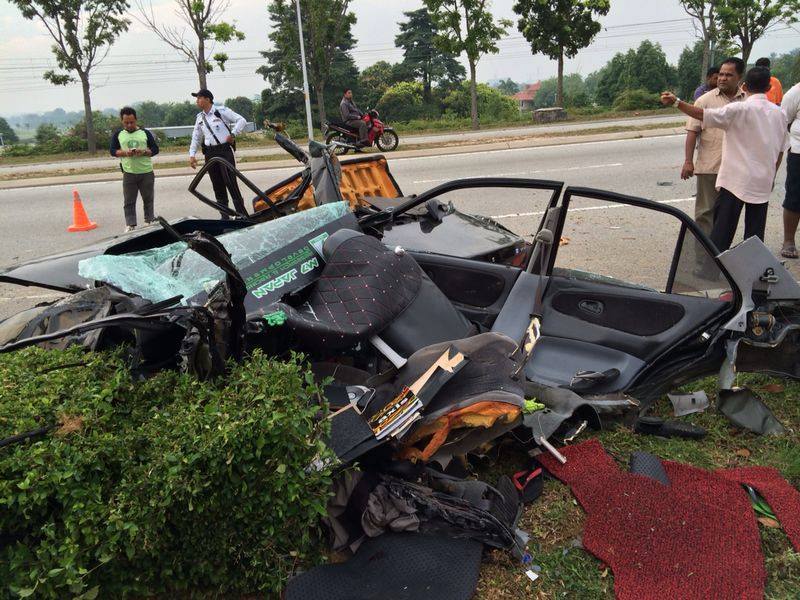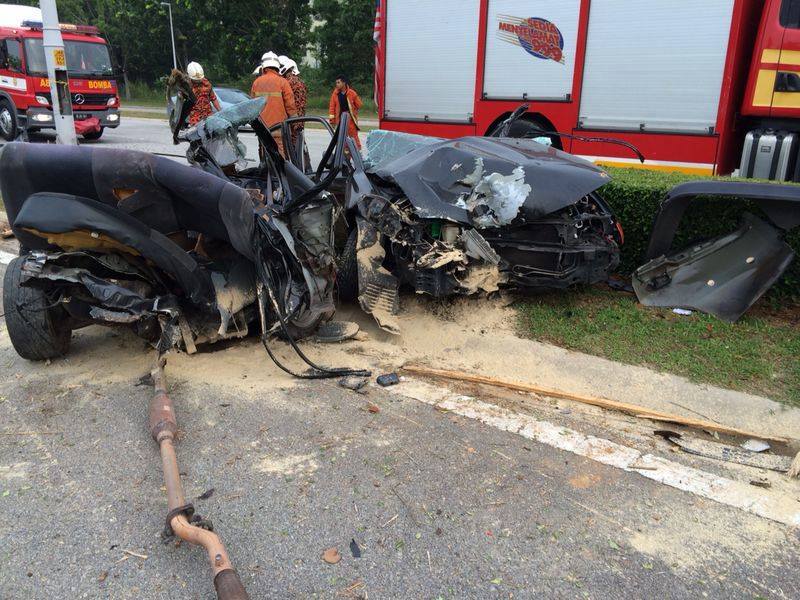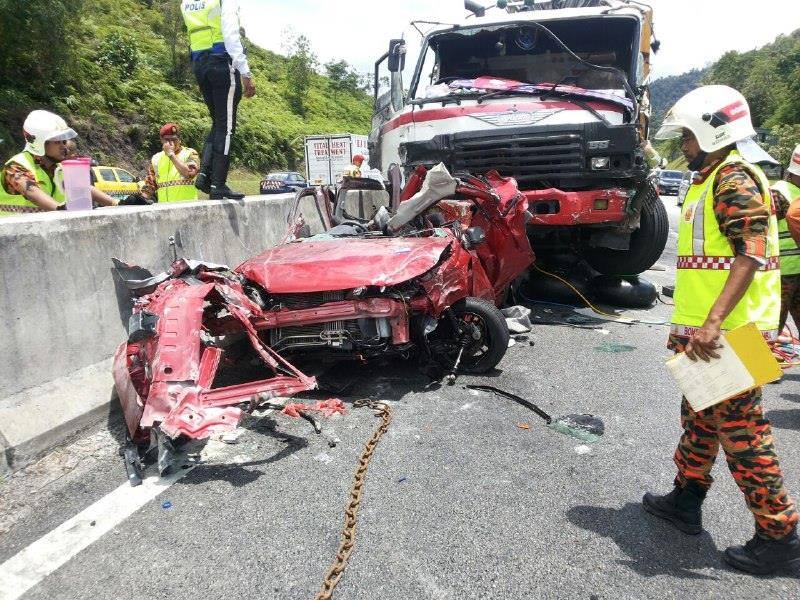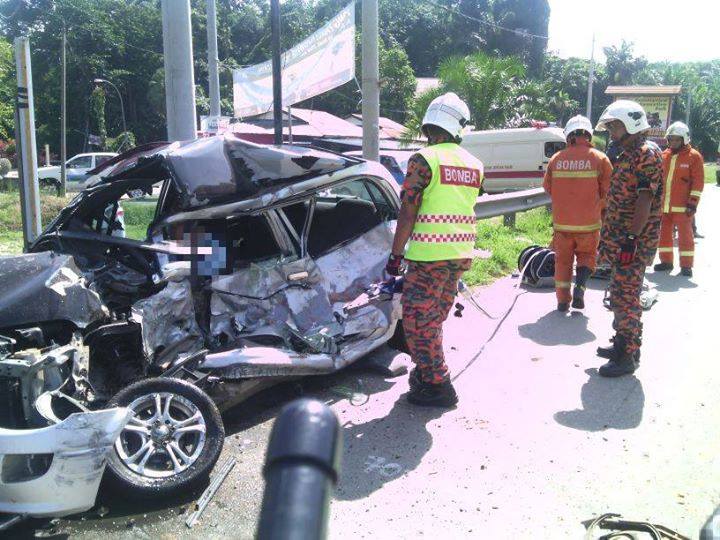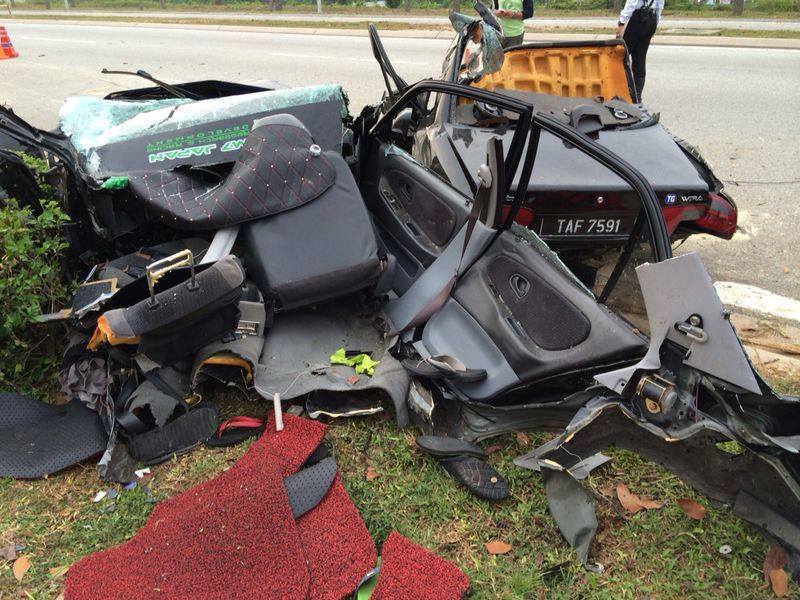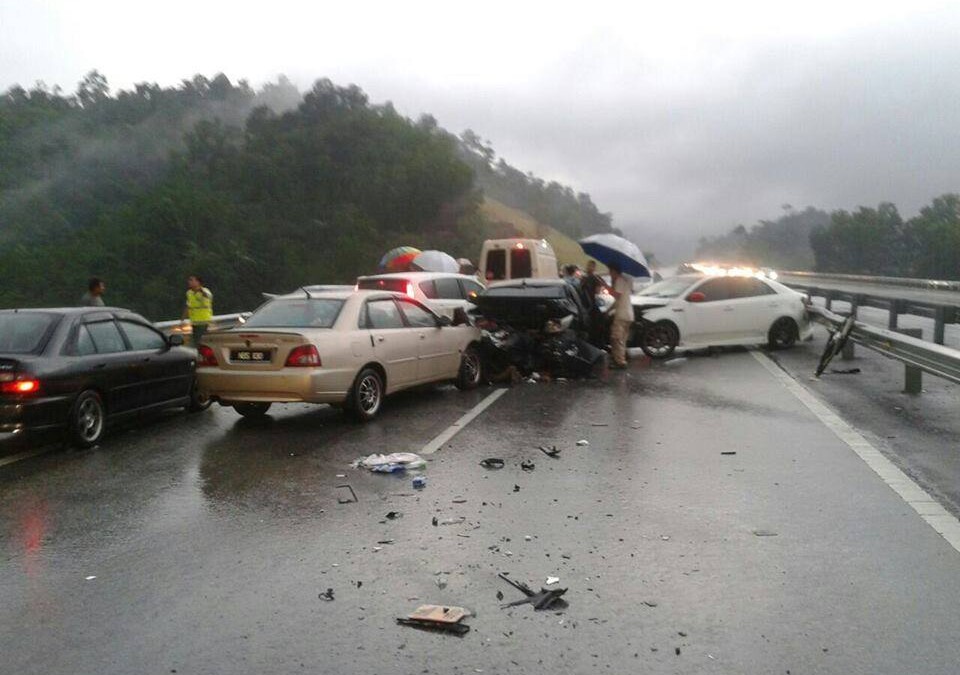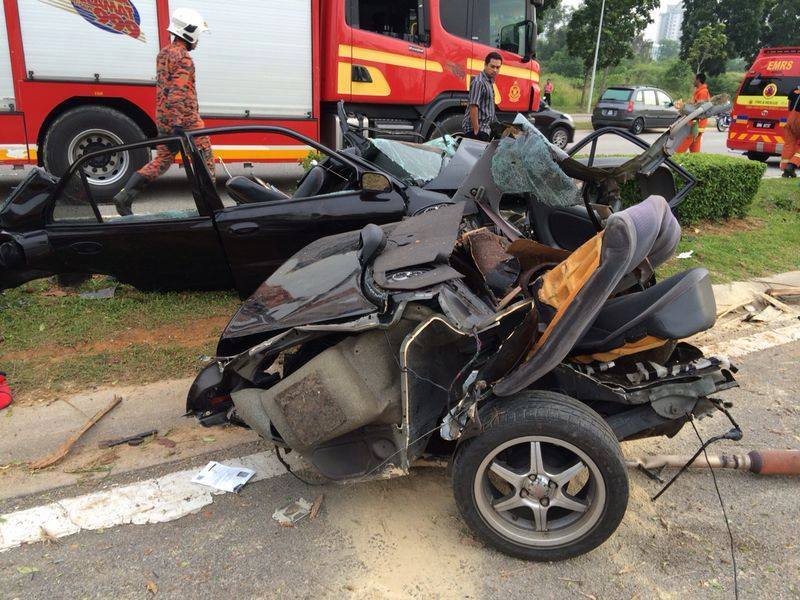Have you ever wondered why ‘crash tests’ like the one being conducted above are only done up to a certain speed? I mean, don’t you find it a tad ironic that while modern day cars are able to reach speeds in excess of 200kmh, and full-blown supercars are now capable of speeds that hover around the absolutely ridiculous 400kmh mark, yet crash tests are still carried out only up to around a paltry 60kmh?
Well, the reason is that after a certain speed, crashes are un-survivable due to the laws of physics. Let’s break it down a bit first. During a crash, there are actually three forms of impact that occur:
1) Vehicle impacts object or another vehicle
2) Occupants impact the inside of the vehicle
3) Internal organs of occupants impact the inside of their body
Number 3 is actually the main reason why crash tests are only done up to a certain speed; the human body simply cannot withstand the kind of G-forces achieved during rapid deceleration that occurs during a high-speed crash. So paradoxically, and all unintended humour aside, it’s not so much the speed that kills, it really is the sudden stop that’s the culprit.
In this video of an extreme crash test, a Ford Focus is crashed at 120mph (193kmh) into an immovable solid concrete block, and the results as you can imagine are chilling.
This is of course an extreme scenario, and the chances of you having a crash like this are remote, however, it does hammer home a very valid point; the more excessive the speed, the lesser the chances of survival.
This leads us back to #3 of that ‘impact’ order above. It is said that the human body can withstand a maximum of 4-5G’s (x times the normal gravitational pull) before passing out, and up to 9-10G’s before more severe internal injuries occur. In that crash-test video, the ‘dummies’ experienced up to 400G’s, four-hundred times the normal weight. To put that into perspective, if you weigh 80kg and crashed like that, upon impact, you would weigh 32,000kg, just for a moment. A crash like that is not ‘survivable’.
As mentioned earlier though, the video is an extreme – and to be honest – a rather fanciful scenario, however, as many of the photos in this article depict, the resulting carnage looks to be almost the same doesn’t it? And this is despite the fact that the vehicles in these photos did not slam into a massive immovable concrete block at 120mph on the highway.
Passive safety systems such as seat-belts, airbags, crumple zones, etc. as well as Active safety systems such as ABS, EBD, Stability and Traction control, etc. are all available in most if not all modern day cars, but they remain just an aid to 1) avoid a crash, and 2) survive a crash, but only up to a certain point. Hence the reason official crash tests are done only up to a certain speed, and a vehicle is made to protect its occupants only up to that speed.
Over the course of the recent Hari Raya Aidiladha long-weekend, Malaysians made a bee-line for the highways right after clocking off work, and as such, the usual gridlock that plagues downtown KL on a Friday evening actually spread to the highways too. I recall seeing some crazy posts on social-media from those who’d taken around 4-5hours just to get to Ipoh.
Of course it was not long before reports of accidents began to flood said pages too, the most horrific being the one at Jelapang heading north (above). It’s a treacherous stretch of highway, which I have travelled many times, and it gets especially deadly when it’s wet. While the circumstances that caused this tragedy are still being investigated, and without pointing any accusing fingers at anyone, I would wage a bet that excessive speed was part of the cause, perhaps spiced with a healthy dose of the 3 “I’s” that I’d written about in the past. Our thoughts and prayers go out to those involved.
As I’ve always said, there’s no point going fast if you can’t stop, or worse, if you do not know how to handle an emergency situation. But more importantly, just slow down. Seriously, it’s as simple as that. Remember the saying “better late than never”? Never has it been more apt than when we’re on the road.
[Photo credit: Jabatan Bomba dan Penyelamat – https://www.facebook.com/BombaMalaysia.syed]
Other posts by Chris Wee

